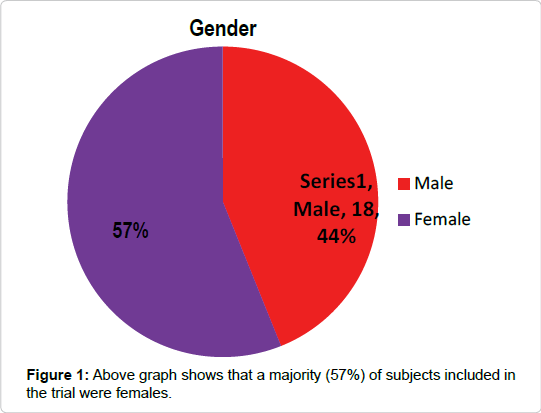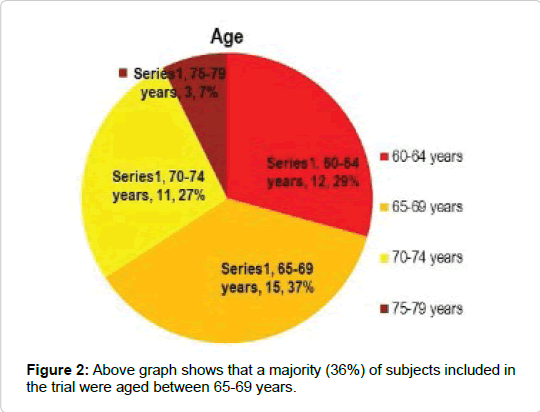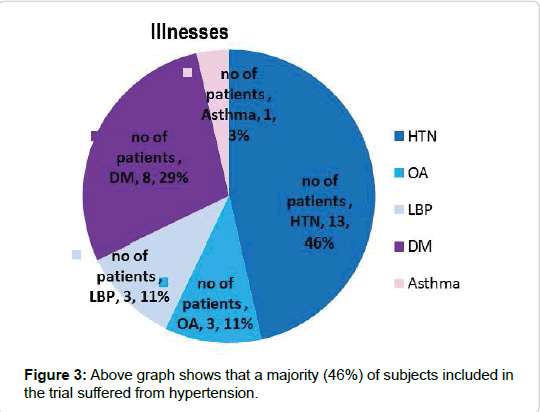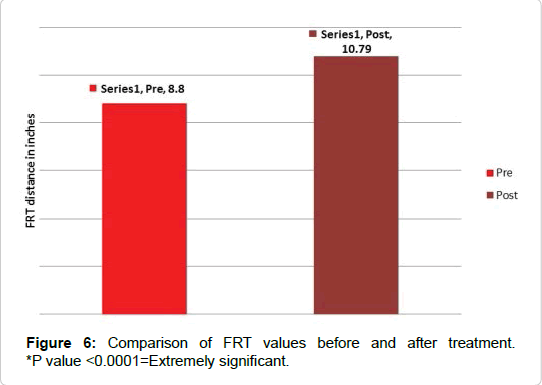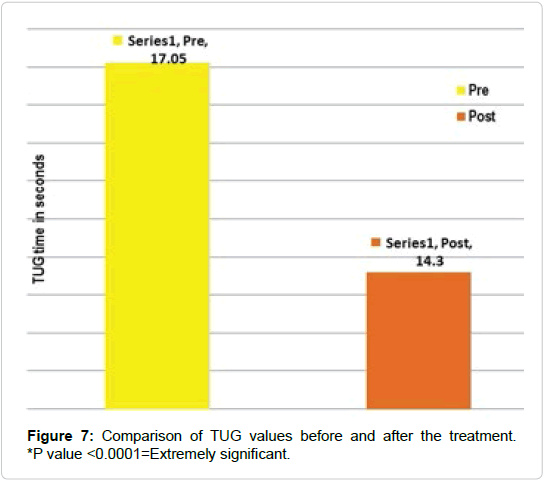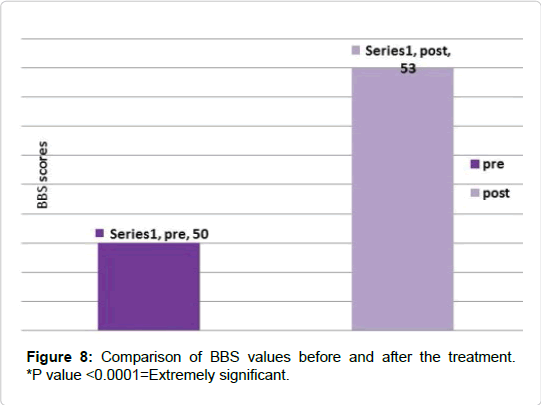Effect of Stability Trainer Exercise Program on Balance in Geriatric Population
Received: 19-Jul-2017 / Accepted Date: 26-Dec-2017 / Published Date: 29-Dec-2017 DOI: 10.4172/2161-0711.1000578
Abstract
Background: Affected balance is one of the leading causes of falls in elderly. Falls are one of the major problems in the elderly and are considered one of the “Geriatric Giants”. Falls are often caused by a number of factors and may be grouped into intrinsic factors, such as existence of a specific ailment or disease, and external or extrinsic factors includes the environment and the way in which it may encourage or deter accidental falls. Stability trainers provide different sensory feedback. They come in different textures hence can provide different proprioceptive feedback according to requirement for training balance strategies. There is lack of research published previously to assess effect of stability trainer exercises on balance in diabetics, where they have found to show a significant change in balance abilities. Identifying the effect of stability trainers in training balance in elderly can help to address the specific problem of reduced balance and falls in this group more effectively. Hence, taking into consideration the need of the hour, this study is proposed to determine the effects of stability trainer exercise program on balance in elderly.
Objectives: To study the effect of stability trainer exercise program on: Static balance using Single leg stance test (SLS); Dynamic balance using functional reach test (FRT) and Timed Up and Go (TUG) test; Static functional tasks using berg balance scale (BBS); Balance confidence using activity specific balance confidence assessment questionnaire (ABC).
Methodology: 41 individuals above the age of 60 without any obvious motor, sensory or neurological deficit were selected. Consent of subject was taken and the format and details of the stability training exercise program was explained to the healthy subjects. Pre intervention evaluation was followed by Implementation of exercise program (4/week→6 weeks). Assessment for post intervention data was carried out after which the collected data was statistically analysed used t-test and Wilcoxin test.
Results: There was a significant difference in the mean SLS time before and after administration of STEP indicated by the p value (p value<0.0001) which is extremely significant. There was a significant difference in the mean FRT and TUG values before and after administration of STEP indicated by the p value (p value<0.0001) which is extremely significant. There was a significant difference in the BBS scores before and after administration of STEP indicated by the p value (p value<0.0001) which is extremely significant. There was a significant difference in the ABC scores before and after administration of STEP indicated by the p value (p value<0.0001) which is extremely significant.
Conclusions: Stability trainer exercise program (STEP) is extremely effective for balance training and improving the quality of life in the elderly.
Keywords: Balance; Elderly; Stability trainer; Exercise
Introduction
Aging means predictable, progressive, universal deterioration in various physiological systems, mental and physical, behavioral and biomedical system. In India, persons above 60 are called aged/elderly [1].
As per the 1991 census, the population of the elderly in India was 57 million as compared with 20 million in 1951. There has been a sharp increase in the number of elderly persons between 1991 and 2001 and it has been projected that by the year 2050, the number of elderly people would rise to about 324 million. India has thus acquired the label of “an ageing nation” with 7.7% of its population being more than 60 years old [1].
The problems faced by this segment of the population are numerous owing to the social and cultural changes that are taking place within the Indian society (Table 1). The major area of concern is the health of the elderly with multiple medical and psychological problems. Falls are one of the major problems in the elderly and are considered one of the “Geriatric Giants”. Recurrent falls are an important cause of morbidity and mortality in the elderly and are a marker of poor physical and cognitive status. Following are the physiological changes according to the age [2-5].
| Variable | Scale | type | Method of ascertainment |
|---|---|---|---|
| Functional reach test distance | Quantitative | interval | Evaluation (explained in appendix) |
| Timed Up and Go test time | Quantitative | interval | Evaluation (explained in appendix) |
| Single limb stance test time | Quantitative | interval | Evaluation (explained in appendix) |
| Berg balance scale scores | Quantitative | interval | Evaluation (explained in appendix) |
| activity specific balance confidence assessment questionnaire score | Quantitative | interval | Interview (explained in appendix) |
| Height | Quantitative | Ordinal | Evaluation (standard evaluation procedure) |
| Weight | Quantitative | Ordinal | Evaluation (standard evaluation procedure) |
| Age | Quantitative | Ordinal | Evaluation (according to birth certificates/patient information) |
Table 1: Dependent variables.
• Musculoskeletal system changes-reduced muscle strength, degenerative changes
• Neurological system-increases motor conduction latency, reduced sensation, reduced proprioception, impaired balance strategies, reduced number of neurons hence impaired processing of information
• Reduced visual acuity, reduced vestibular system function
• Cardio respiratory system reduced aerobic capacity, increased fatigue.
Decline in various body functions including changes in the musculoskeletal system, neurological system, vestibular system
function, changes in visual acuity, and changes in cardiorespiratory system
↓
Increased risk of falls leading to increased dependency
↓
Psychosocial disturbances and impaired quality of life
Falls are often caused by a number of factors. Risk factors may be grouped into intrinsic factors, such as existence of a specific ailment or disease, and external or extrinsic factors includes the environment and the way in which it may encourage or deter accidental falls. All these in turn can lead to increased risk of falls, leading to increased dependency, psychosocial issues and impaired quality of life. This also contributes to a significantly high cost of care (Figures 1-5) [2].
Balance is dependent on feedback and feed forward mechanism. Feedback mechanism can be classified depending on information coming from various sensory systems of the individuals or internal stimuli called as intrinsic feedback or feedback or information coming from an external stimuli called as extrinsic feedback. Intrinsic feedback is feedback coming to an individual through the various sensory systems as a result of normal production of movement such as visual information concerning whether a movement was accurate, as well as somatosensory information concerning the position of the limbs as one was moving. Extrinsic (or augmented) feedback is information that supplements intrinsic feedback. It is the feedback or information gained by the individual through the external environment. This includes the verbal and manual feedback required for completion of task by the patient (Tables 2-8).
| Forward reach test | Timed up and go | Single limb stance test | Berg Balance Scale | Activity specific balance confidence | |
|---|---|---|---|---|---|
| Before and after STEP | Paired t test | Paired t test | Paired t test | Paired t test | Wilcoxin test |
Table 2: Analysis.
| Gender | No of Patients | % |
| Male | 18 | 43 |
| Female | 23 | 57 |
Table 3: Distribution of Gender among the chosen population.
| Age | No. of patients | % |
|---|---|---|
| 60-64 years | 12 | 31 |
| 65-69 years | 15 | 36 |
| 70-74 years | 11 | 26 |
| 75-79 years | 3 | 7 |
Table 4: Distribution of age among the chosen population.
| Illnesses | no of patients | % |
|---|---|---|
| HTN | 13 | 46 |
| OA | 3 | 11 |
| LBP | 3 | 11 |
| DM | 8 | 29 |
| Asthma | 1 | 3 |
Table 5: Distribution of common illnesses among the chosen population.
| No of falls | No of patients | % |
|---|---|---|
| 0 | 26 | 64 |
| 1 | 10 | 24 |
| 2 | 5 | 12 |
Table 6: Number of falls sustained by the chosen population in the past 1 year.
| SLS | ||
|---|---|---|
| Pre | Post | |
| Mean | 12.62 | 22.97 |
| SD | 11.88 | 20 |
| P value | <0.001 | |
| t value | 7.16 | |
| Inference | Extremely significant | |
Table 7: Comparison of mean SLS values before and after treatment.
| FRT | ||
|---|---|---|
| Post | Post | |
| Mean | 8.8 | 10.79 |
| SD | 2.24 | 2.7 |
| P value | <0.001 | |
| t value | 10.896 | |
| Inference | Extremely significant | |
Table 8: Comparison of FRT scores before and after treatment.
Inputs from external and internal environment play a vital role in deciding body’s response to a stimulus or proposed action. With age the individuals rely more on feedback from external environment than body as the body function is declining. Thus the individual depends more on vision to maintain balance. Improving these proprioceptive, musculoskeletal system responses can help an elderly individual to maintain balance effectively [2-8].
Various studies have proved that, exercise interventions that are delivered either by a physical therapist [4-9] or by a trained individual supervised by a physical therapist [10,11] may be one of the most effective interventions to prevent falls. The role of therapists in these interventions was to lead structured, progressive exercise programs over a period of 3 to 12 months. The outcomes include improvements in physical performance measures and significant reductions in fall rates. Many of these researchers found significant change in balance strategies which was attributed to improved strength, balance, proprioception, reaction responses and stamina [6,7,9,10].
Stability trainers are oval shaped foam pads which provide different sensory feedback. They come in different textures hence can provide different proprioceptive feedback according to requirement for training balance strategies (Tables 9-11). They are cheap and easily available, light weight, can be carried anywhere easily. Thus they pass the criteria to be one of the preferred form of exercises. And can be used effectively to train balance. Only one study has been published previously to assess effect of stability trainer exercises on balance in diabetics, where they have found to show a significant change in balance abilities [12-18].
| TUG | ||
|---|---|---|
| Pre | Post | |
| Mean | 17.01 | 14.3 |
| SD | 5.2 | 4.8 |
| P value | <0.001 | |
| t value | 13.445 | |
| Inference | Extremely significant | |
Table 9: Comparison of TUG values before and after the treatment.
| BBS | ||
|---|---|---|
| Pre | Post | |
| Mode | 50 | 53 |
| SD | 6.5 | 5.5 |
| P value | <0.0001 | |
| t value | 10.601 | |
| Inference | Extremely significant | |
Table 10: Comparison of BBS scores before and after the treatment.
| ABC | ||
|---|---|---|
| Pre | Post | |
| Mode | 89 | 95 |
| SD | 16.3 | 14.7 |
| P value | <0.0001 | |
| Inference | Extremely significant | |
Table 11: Comparison of ABC scores before and after the treatment.
Stability trainer exercises can challenge proprioceptive system and thus help to train it effectively. Identifying the effect of stability trainers in training balance in elderly can help to address the specific problem of reduced balance and falls in this group more effectively. Hence, taking into consideration the need of the hour, this study is proposed to determine the effects of stability trainer exercise program on balance in elderly (Figures 6-9).
Aim
To evaluate effect of stability trainer exercise program (STEP) on balance in older adults.
Objectives
• To study the effect of stability trainer exercise program on:
• Static balance using Single leg stance test (SLS)
• Dynamic balance using functional reach test (FRT) and Timed Up and Go (TUG) test
• Static functional tasks using berg balance scale (BBS)
• Balance confidence using activity specific balance confidence assessment questionnaire (ABC)
Experimental hypothesis
Stability trainer exercise program is effective in improving balance in elderly.
Null hypothesis
Stability trainer exercise program has no effect on balance in elderly.
Methodology
Type of study: Experimental
Study population: elderly people
Inclusion criteria: Adult above 60 years of age, ambulating without assistive device,
Exclusion criteria: any known neurological problems(stroke, parkinsonism, motor neuron disease, paraplegia) sensory loss, known orthopaedic problems (amputation, symptomatic lower limb arthritis, lower limb deformities, total knee/hip replacements), inability to follow commands, regular exercises for more than 2 hrs /week, symptomatic coronary artery diseases
Study setting: Old age homes, community
List of variables
Independent variables: functional reach test distance timed up and go test time, single limb stance test time, Age, gender, weight, height.
Dependent variables
Scores of Outcome measures: single limb stance test time, functional reach test distance, Timed Up and Go test time, Berg balance scale score, activity specific balance confidence assessment questionnaire score.
Confounding factors: previous participation in exercise program, lower limb pain and deformities.
Sample size (with rationale): 41 individuals (calculated by taking previous researches into consideration, with alpha=0.05, confidence level-95, power-0.80 mean (SD) +/-=4.0(1.3)).
Sampling method-random
Method of allocation: block randomization.
Interventions: Stability trainer exercise program (made by taking into consideration previous references and programs).
Detailed plan
• Consent from the ethical committee was obtained
• Selection of subjects according to inclusion criteria, and explanation of procedures
• Consent of subject was taken and the format and details of the stability training exercise program was explained to the healthy subjects
• Interview-collection of demographic data, allocation of exercise group
• Pre intervention evaluation
• Implementation of exercise program(4/week → 6 weeks)
• Assessment for post intervention data
• Analysis of collected data.
Results
There was a significant difference in the mean SLS time before and after administration of STEP indicated by the p value (p value <0.0001) which is extremely significant. There was a significant difference in the mean FRT and TUG values before and after administration of STEP indicated by the p value (p value <0.0001) which is extremely significant. There was a significant difference in the BBS scores before and after administration of STEP indicated by the p value (p value <0.0001) which is extremely significant [19-22]. There was a significant difference in the ABC scores before and after administration of STEP indicated by the p value (p value <0.0001) which is extremely significant.
Conclusion
Stability trainer exercise program (STEP) is extremely effective for balance training and improving the quality of life in the elderly.
Clinical Implication
• This study is clinically relevant and can be used for the following:
• STEP can be used as an effective mode of balance training in geriatric population with or without any history of fall thereby preventing any chances of fall in future. It also improves the confidence of the elderly preventing them from having any psychological implications (eg- fear of falling)
• This programme has a holistic approach targeting and improving all the factors affecting balance like proprioception, lower limb muscle strength and vestibular functions.
• Spreading awareness of how exercises done on stability trainers in particular help in improving the quality of life in the elderly.
References
- Rand D, Miller W, Yui J, Engl JJ (2011) Interventions for addressing low balance confidence in older. Age Ageing 40: 297.
- Bishop MD, Patterson TS, Romero S, Light KE (2010) Improved fall-related efficacy in older adults related to changes in dynamic gait ability. Phys Ther 11: 1598-1606.
- Lindemann U, Rupp K, Muche K, Nikolaus T, Becker C (2004) Improving balance by improving motor skills. Zeitschrift für Gerontologie und Geriatrie 37: 20-26.
- Beebe, Hines RW, McDaniel LT, Shelden BL (2013) An isokinetic training program for reducing falls in a community-dwelling older adult: A case report. J Geriatr Phys Ther 36: 146-153.
- Chou CH, Hwang CH, Wu YT (2012) Effect of exercise on physical function, daily living activities, and quality of life in the frail older adults: A meta-analysis. Arch Phys Med Rehabil 93: 237-244.
- Au-Yeun SSY (2012) Did mobility and balance of residents living in private old age home improve after a mobility exercise program. A pilot study. J Hong kong Phys Ther 20: 2-21.
- Choi JH, Moon JS, Song R (2005) Effects of sun-style tai chi exercise on physical fitness and fall prevention in fall-prone older adult. J Adv Nurs 51: 150-157.
- Marjan J, Bosscher RJ, Chin A Paw MJ, van Wieringen PC (2006) Effects of exercise programs on falls and mobility in frail and pre-frail older adults: A multicenter randomized controlled trial. Arch Phys Med Rehabil 87: 885-896.
- Thomas S, Mackintosh S, Halbert J (2010) Does the 'Otago exercise programme' reduce mortality and falls in older adults?: A systematic review and meta-analysis. Age Ageing 39: 681-687.
- Liu-Ambrose T, Donaldson MG, Ahamed Y, Graf P, Cook WL, et al. (2008) Otago home-based strength and balance retraining improves executive functioning in older fallers: A randomized controlled trial. J Am Geriatr Soc 56: 1821-1830.
- Shumway-Cook A, Anson D, Haller S (1988) Postural sway biofeedback: Its effect on reestablishing stance stability in hemiplegic patients. Arch Phys Med Rehabil 69: 395-400.
- Davidson BS, Madigan ML, Nussbaum MA (2004) Effects of lumbar extensor fatigue and fatigue rate on postural sway". Eur J Appl Physiol 93: 183-189.
- Wolfson L, Whipple R, Derby CA, Amerman P, Murphy T, et al. (1992) A dynamic posturography study of balance in healthy elderly. Neurology 11: 2069-2075.
- Watson AW (1995) Sports injuries in footballers related to defects of posture and body mechanics. J Sports Med Phys Fitness 35: 289-294.
- Nejc S, Loefler S, Cvecka L, Sedliak  M, Kern H (2013) Strength training in elderly people improves static balance: A randomized controlled trial. J Translational Myology-Basic Applied Myology 23: 85-89.
- Smith KE (1996) The effects of exercisetraining onfunctional balance in a community-dwelling elderly population†grand valley state University.
- Arnold AS, Anderson FC, Pandy MG, Delp SL (2005) Muscular contributions to hip and knee extension during the single limb stance phase of normal gait: A framework for investigating the causes of crouch gait. J Biomech 38: 2181-2190.
- Daubney ME, Culham EG (1999) Lower-extremity muscle force and balance performance in adults aged 65 years and older. Phys Ther 79: 177-1185.
- Maranesi E, Ghetti G, Rabini RA, Fioretti S (2014) Functional reach test: Movement strategies in diabetic subjects. Polytechnic University of Marche. Gait Posture 39: 501-505.
- Frank JS, Patla AE (2003) Balance and mobility challenges in older adults: Implications for preserving  community mobility. Am J Prev Med 25: 157-163.
- Hatch J, Gill-Body KM, Portney LG (2003) Determinants of balance confidence in community-dwelling elderly people. Phys Ther 83: 1072-1079.
Citation: Chavan U, Sheikh A (2017) Effect of Stability Trainer Exercise Program on Balance in Geriatric Population. J Community Med Health Educ 7: 578. DOI: 10.4172/2161-0711.1000578
Copyright: ©2017 Chavan U, et al. This is an open-access article distributed under the terms of the Creative Commons Attribution License, which permits unrestricted use, distribution, and reproduction in any medium, provided the original author and source are credited.
Share This Article
Recommended Journals
Open Access Journals
Article Tools
Article Usage
- Total views: 4830
- [From(publication date): 0-2017 - Apr 07, 2025]
- Breakdown by view type
- HTML page views: 3974
- PDF downloads: 856

